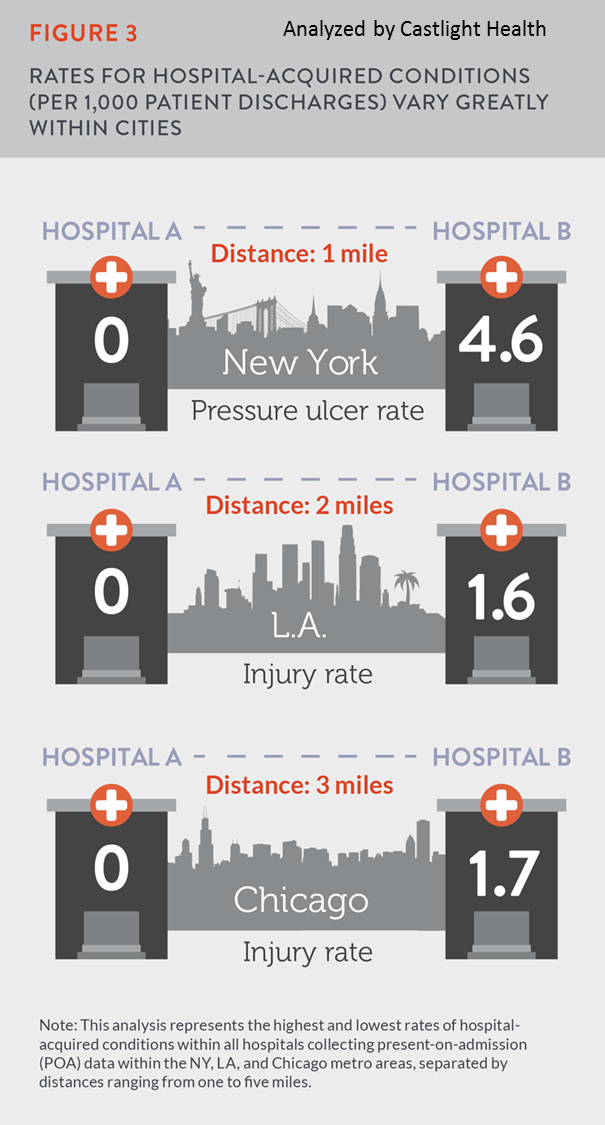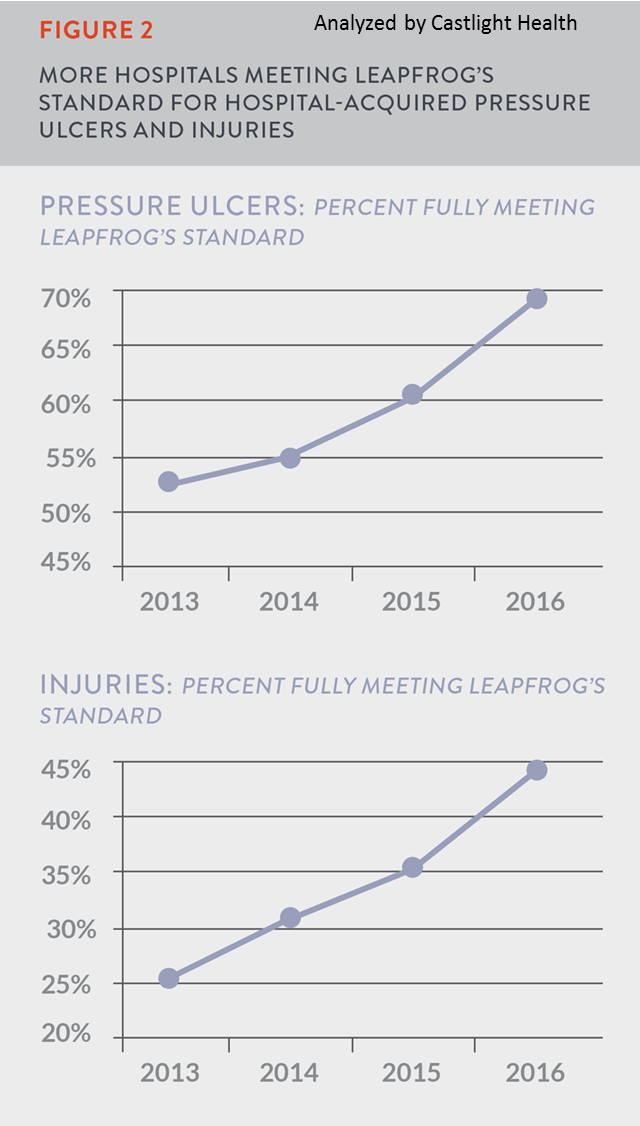
The Leapfrog Group and Castlight Health released today the first-ever analysis of The Leapfrog Group’s 2016 Hospital Survey Results on two preventable hospital-acquired conditions: serious pressure ulcers and injuries.
No one who enters a hospital for care expects to be harmed or sickened accidentally. Unfortunately, preventable errors and mishaps are all too common, occurring during one in six hospital admissions and killing at least 500 people a day in the U.S. The Leapfrog Group, the national nonprofit watchdog run by employers and other large purchasers of health benefits, tracks many of these problems and publicly reports them by hospital.
Castlight Health’s analysis of Leapfrog’s data finds some good news: the incidence of serious pressure ulcers (often known as “bedsores”) and injuries has declined over the past four years. The bad news: only about a third of reporting hospitals in the U.S. (35 percent) met Leapfrog’s standard on preventing both.
Highlights of the report include:

- Rates of hospital-acquired pressure ulcers and injuries have been steadily decreasing over the past four years. The average rate of pressure ulcers across reporting hospitals was .102 hospital-acquired pressure ulcers per 1,000 inpatient discharges in 2016 compared to .122 in 2013, a 16 percent improvement. For hospital-acquired injuries, the average was .419 injuries per 1,000 inpatient discharges amongst reporting hospitals in 2016 compared to .521 in 2013, an improvement of nearly 20 percent.
- Gains, but progress is too slow. Using Leapfrog’s certified Lives and Dollars Lost Calculator, these improvements resulted in an estimated savings of 49 lives and more than $33 million. However, if all hospitals had reduced their rates of pressure ulcers and hospital-acquired injuries to zero—as some hospitals have done--an estimated 263 lives and $175 million could have been saved.
- Hospitals vary dramatically on their ability to protect patients from hospital-acquired conditions, even within the same city. For example, the rate of hospital-acquired injuries in Chicago ranged from zero at one hospital to as much as 1.712 per 1,000 inpatient discharges at another just three miles away. Additionally, the rate of hospital-acquired pressure ulcers in the New York metro ranged from zero at one hospital to 4.631 per 1,000 inpatient discharges at another institution less than four miles away.
“We are encouraged by the steady decline in hospital-acquired conditions over the last four years,” said Leah Binder, president and CEO of Leapfrog. “We are also encouraged by growing hospital transparency. All the hospitals in this report volunteered this information on their performance, and that gives us great confidence. The hospitals to worry about are those that declined to report on these problems. Patients deserve to know.”
“This information allows for informed health care decisions at all levels by patients seeking hospital care and employers looking to ensure their employees are using the facilities least likely to harm them,” said Maeve O’Meara, senior vice president of product at Castlight Health. “It’s incredibly important to Castlight that we’re able to work with Leapfrog to provide this.”
The complete Hospital-Acquired Conditions report is available online. Additional resources and tools for patients, employers and purchasers may be found here.
